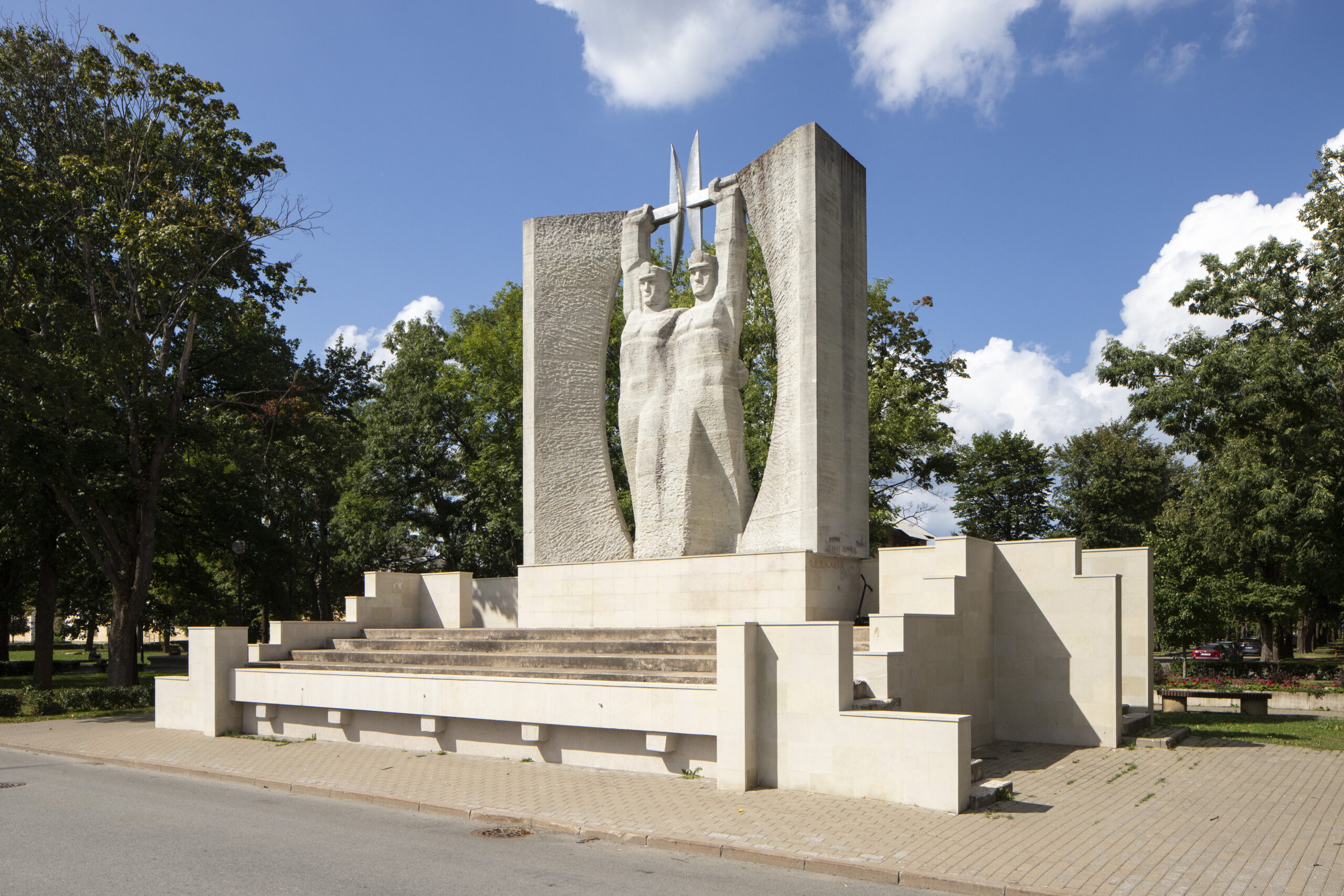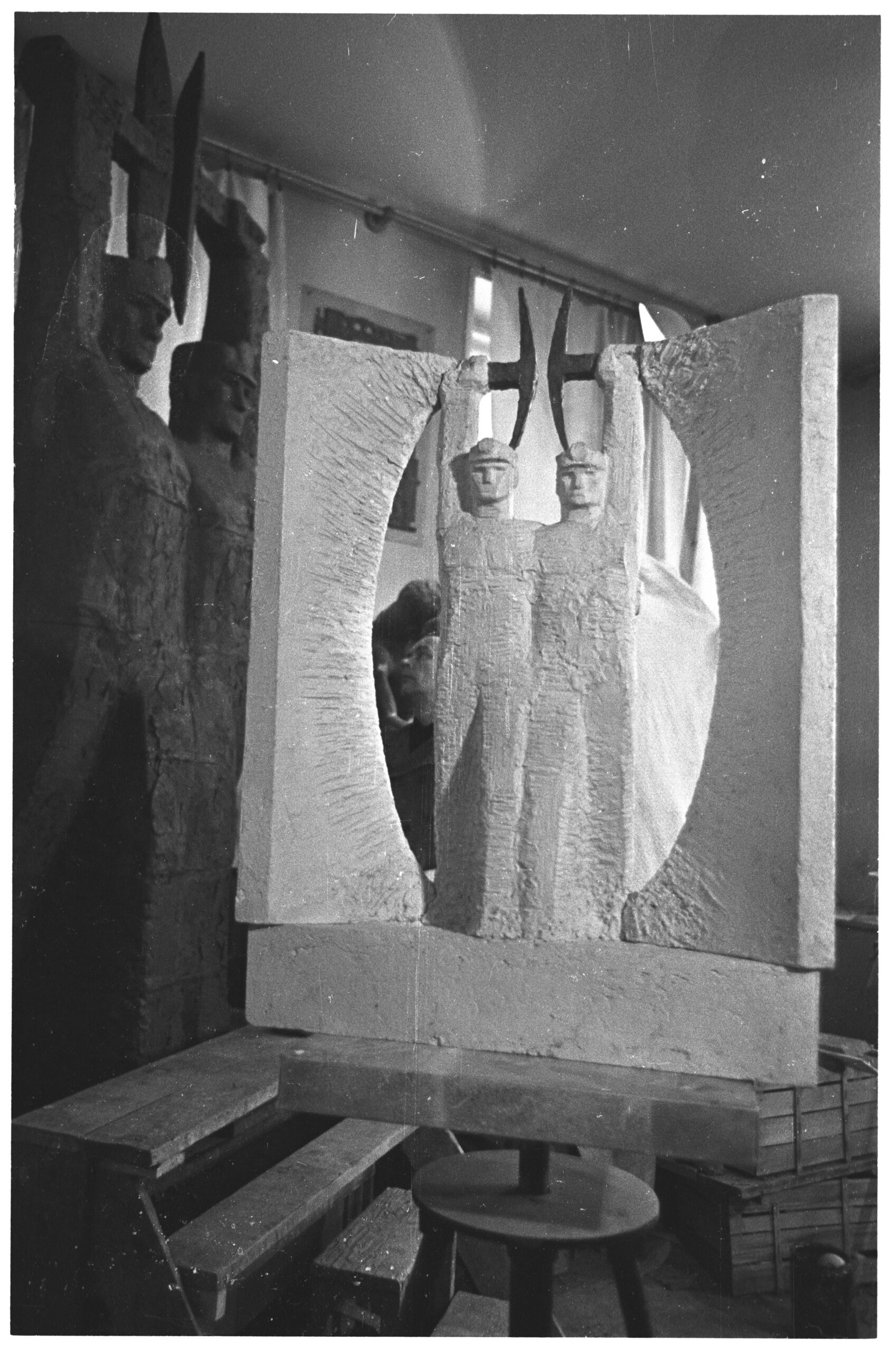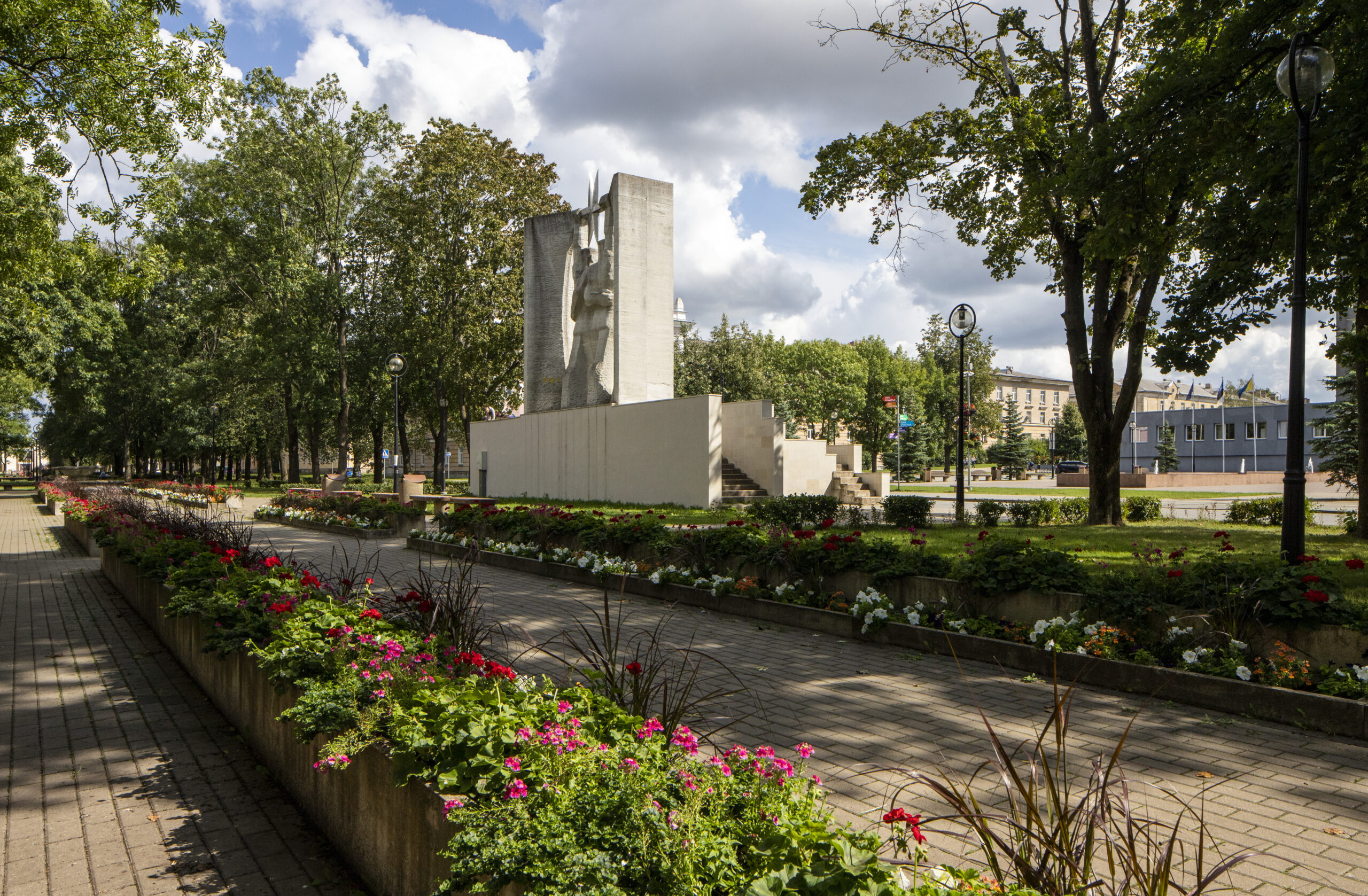Monument Au tööle (“Glory to Work”)
Year of completion: 1967
Address: Ida-Viru County, Kohtla-Järve, Keskallee park
Authors: Olav Männi, architect Udo Ivask
Not listed as a cultural monument
The Soviet Union, entitled as a workers’ state, held industrial workers in exceptionally high esteem, as their hard and selfless work was to uphold the socialist economy of the whole country. Needless to say, the crème de la crème of the working class was composed of those who did the hardest work, and this completely deservedly included miners. Kohtla-Järve, a town built around the oil shale industry, was a striking example of a Soviet industry town, and instilling the cult of the workers’ nation through monumental art in such a town was outright obligatory.
When the idea arose to enhance the prominent Rahu (Peace) square in the centre of Kohtla-Järve’s Socialist district (now Järve district) with a visual dominant, it was decided that a monument depicting the town’s pride – mine workers – would be the most suitable choice. It was established on the northern side of the broad square that hosted meetings, parades, and other public gatherings, right beside the avenue promenade that passes the town’s governance building, constructed in the 1970s. The tribune in front of the monument became an arena for the town’s political party bosses and functionaries to wave at the passing Soviet workers during celebrations. The piece quickly became one of the visual identification symbols of the town otherwise lacking in symbolism and monuments.
In the centre of the dolomite monument are two vigorous and stern-faced miner figures, both in a victorious position, with one foot stepping ahead, and their metal pickaxes held high above their head. On each side of the miners are screen-like dolomite blocks with arcs carved in them, creating solemn halo of a sort around the worker figures.
After completion, the piece readily started living its own life in the local folklore as well. In the project version it was named Õlg õla kõrval (“Shoulder Beside Shoulder”) but was named Au tööle instead, as suggested by the town’s party committee. As was often the case, such sententious and slogan-like names were not adopted by the local folks, and soon enough the monument was called “the two sober miners”, or “two sobers” for short. Supposedly the two were the only Kohtla-Järve miners that stayed sober after payday. A popular endearment for it was also “the Žiljabin brothers” after the local miner brothers Vassili and Ivan Žiljabin who were presented as role models for the working people. Among Estonian townspeople on the other hand, a popular name was “Väino and Jaan” after the Eesti Põlevkivi (Estonian Oil Shale) consortium’s manager at the time, Väino Viilup, and the town’s party committee secretary Jaan Lüllemets.
The following town’s party committee secretary Leonid Ananitš had a plan to move the monument out of town, to the top of the Kukruse spoil tip, but the plan fell flat. In 1996, the monument was reconstructed, the tribune in front of it was reduced by a third of its size. In 2020 there were additional refurbishing works on the monument.
Madis Tuuder











